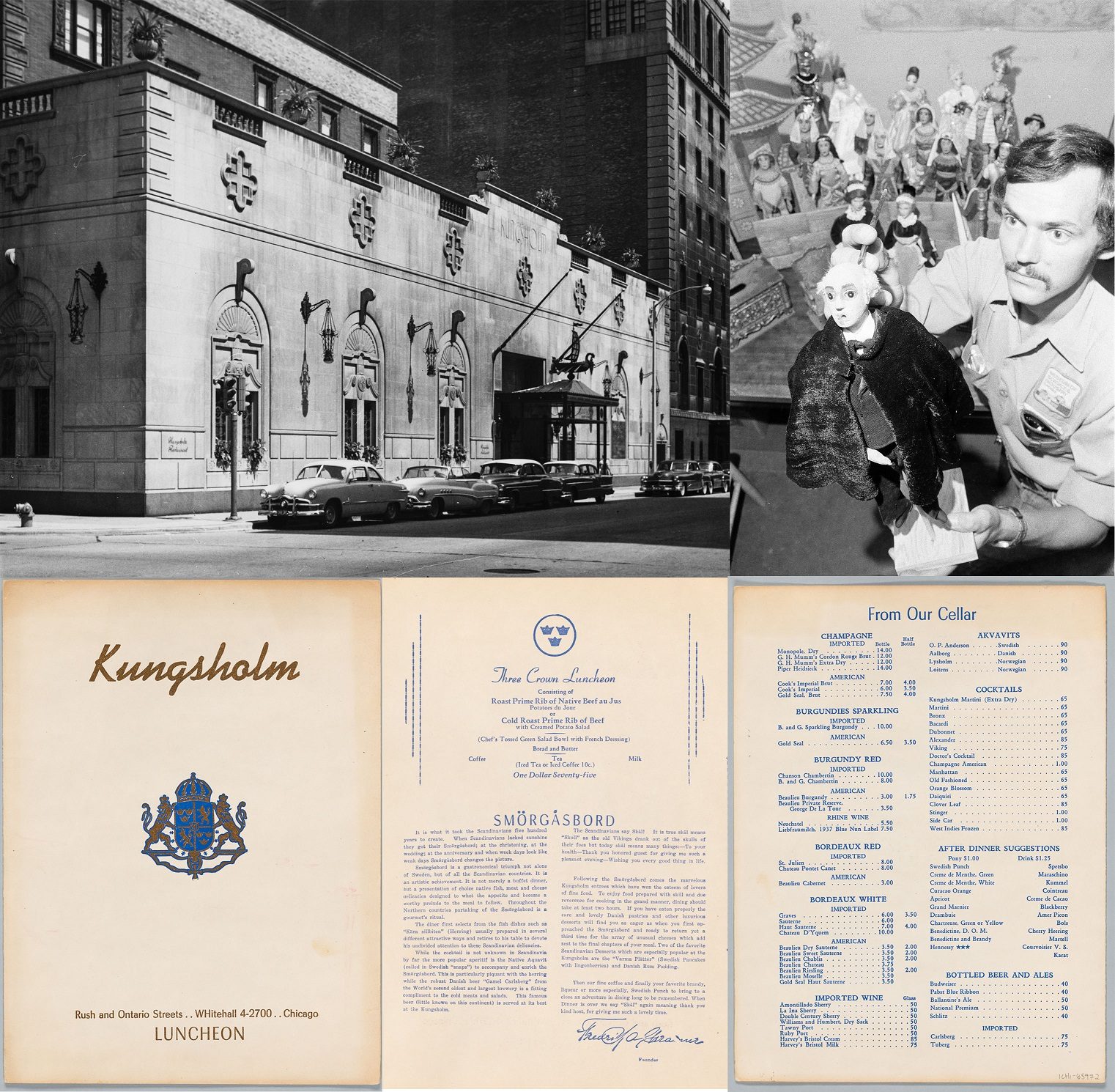
With the news that Lawry’s The Prime Rib will be closing at the end of the year, we can only wonder if the next tenant of the former McCormick Mansion will also make a name there. Let’s revisit another establishment that has left a legacy at the corner of Rush and Ontario Streets. From 1937 to 1971, 100 East Ontario Street was home to the Kungsholm, a one-of-a-kind Scandinavian restaurant that was famed for both its food and entertainment.
Danish-born Chicago restaurateur Fredrik Chramer took over the building in 1937, adding significant square footage and a commanding facade and remodeling the interior in Swedish Modern style. Patrons were greeted by Swedish and American flags and a model Viking ship above the entrance, and the motif of three crowns, the national emblem of Sweden, appeared on the menu and in decor. A large table in the center of the main dining room was laden with items from the three traditional stages of smörgåsbord dining: herring and seafood; hot entreés, such as Kalvfilé Oscar (veal tenderloin with shrimp and asparagus tips covered by béarnaise sauce); and salads and cheeses, followed by dessert and coffee or wine.
In 1940, inspired by the puppet shows he loved as a child in Denmark, Chramer turned the mansion’s fourth-floor ballroom into what would become the internationally known Kungsholm Miniature Grand Opera. Throughout the years, more than a million people were entertained by his unique thirteen-inch-tall handcrafted stringless puppets performing elaborately staged operas, operated by puppeteers on rolling stools beneath the floor.
A fire destroyed the theater in 1947, but Chramer rebuilt it five years later as a new puppet theater modeled after the Opéra Garnier in Paris. As Chramer’s health started failing, he sold Kungsholm and the show to the Fred Harvey chain in 1957. The new owners did not maintain the production quality, and business declined. The Kungsholm puppet opera closed its curtains for good in 1971, and the Chicago History Museum managed to acquire some of the puppets and scenery.
Trace the city’s evolution from meatpacking capital to foodie paradise through our Google Arts & Culture story: Touring Chicago’s Culinary History.
Top: Exterior of the Kungsholm at 100 East Ontario Street, Chicago, July 15, 1954. CHM, ICHi-052263; J. Johnson Jr., photographer. A man touches up puppets at the Kungsholm, Chicago, September 8, 1968. ST-70006535-0037, Chicago Sun-Times Collection, CHM. Bottom: Kungsholm luncheon menu, July 2, 1952. CHM, ICHi-085972-001, ICHi-085972-002, ICHi-085972-003.
Google Arts & Culture
Google Arts & Culture is an online platform that puts the treasures, stories, and knowledge of more than 2,000 cultural institutions from eighty countries at your fingertips. The Chicago History Museum’s portal includes stories from throughout the city’s history. Peruse the designs of Chicago-born couturier Mainbocher, learn about the work of civil rights leader Reverend J. H. Jackson, and so much more! See All Exhibits